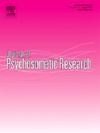Incidence of suicide and suicide attempts following a diagnosis of cancer: A nationwide study using Danish registry data
IF 3.3
2区 医学
Q2 PSYCHIATRY
引用次数: 0
Abstract
Background
Suicide is a significant global health issue, with elevated risks observed in individuals diagnosed with severe somatic diseases, including cancer.
Aim
The study aims to elucidate patterns of suicidal behavior relative to cancer diagnosis, providing both absolute and relative risk estimates.
Methods
A nationwide cohort study utilized Danish registry data (2012−2021). Two cohorts were established: cancer cases (n = 300,803) and an age- and sex-matched comparison group. Suicidal behavior was assessed over seven years (two years pre-diagnosis and five years post-diagnosis) using Poisson regression and Generalized Estimating Equations to calculate incidence rates and incidence rate ratios (IRR).
Results
Suicide rates peaked during the quarter following cancer diagnosis, with IRRs up to 4.3 (CI: 1.3–13.8). Elevated risks for suicide attempts persisted for two years post-diagnosis, decreased thereafter but remained higher than the comparison group. Risk patterns varied by cancer type, sex, and age, with older males exhibiting the highest suicide rates and younger individuals displaying more suicide attempts.
Conclusions
Suicidal behavior significantly increased around the time of cancer diagnosis, highlighting critical periods for intervention. These findings emphasize the importance of integrated mental health support for cancer patients, particularly in the early stages after diagnosis.
癌症诊断后自杀和企图自杀的发生率:一项使用丹麦登记数据的全国性研究
背景自杀是一个重要的全球健康问题,在被诊断患有严重躯体疾病(包括癌症)的个体中观察到自杀风险升高。目的本研究旨在阐明与癌症诊断相关的自杀行为模式,提供绝对和相对风险估计。方法一项全国队列研究使用丹麦注册数据(2012 - 2021)。建立了两个队列:癌症病例(n = 300,803)和年龄和性别匹配的对照组。采用泊松回归和广义估计方程对7年内(诊断前2年和诊断后5年)的自杀行为进行评估,计算发病率和发病率比(IRR)。结果自杀率在癌症诊断后的一个季度达到顶峰,irr高达4.3 (CI: 1.3-13.8)。在诊断后的两年内,自杀企图的高风险持续存在,此后有所下降,但仍高于对照组。风险模式因癌症类型、性别和年龄而异,年龄较大的男性表现出最高的自杀率,而年轻人表现出更多的自杀企图。结论自杀行为在癌症诊断前后显著增加,突出了干预的关键时期。这些发现强调了对癌症患者提供综合心理健康支持的重要性,特别是在诊断后的早期阶段。
本文章由计算机程序翻译,如有差异,请以英文原文为准。
求助全文
约1分钟内获得全文
求助全文
来源期刊
CiteScore
7.40
自引率
6.40%
发文量
314
审稿时长
6.2 weeks
期刊介绍:
The Journal of Psychosomatic Research is a multidisciplinary research journal covering all aspects of the relationships between psychology and medicine. The scope is broad and ranges from basic human biological and psychological research to evaluations of treatment and services. Papers will normally be concerned with illness or patients rather than studies of healthy populations. Studies concerning special populations, such as the elderly and children and adolescents, are welcome. In addition to peer-reviewed original papers, the journal publishes editorials, reviews, and other papers related to the journal''s aims.

 求助内容:
求助内容: 应助结果提醒方式:
应助结果提醒方式:


